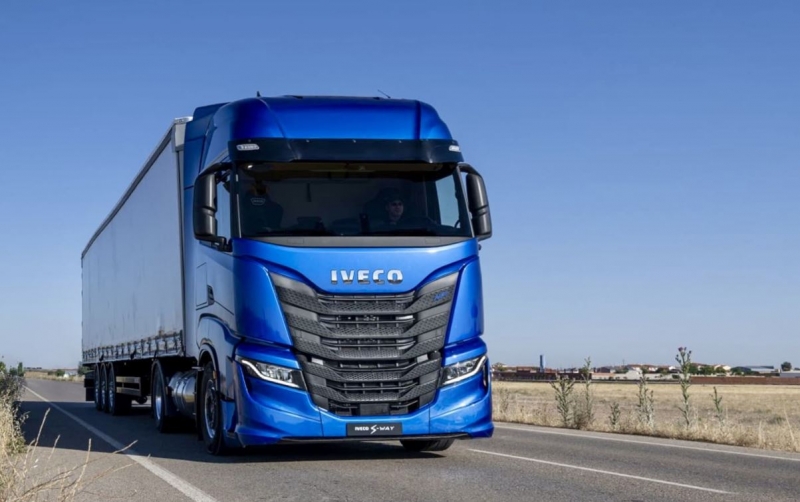IVECO’s Short But Impressive History of Success Is Worth Checking Out

Unlike most of the other European truck manufacturers, Iveco’s history dates back less than 50 years back. However, it still allowed the brand to reach a remarkable success over time.
The Inauguration
The Iveco brand was born in the beginning of 1975 after a total of five different companies merged. The brand’s name is short for Industrial Vehicles Corporation. Fiat industrial Vehicles, OM, Lancia Special Vehicles, Unic and Magirus-Deutz joined forces for that to happen. The brand aimed to launch products far beyond the European borders – the North American, North African Russian markets were targeted. This was a really ambitious plan but it proved to be a realistic one as well.
After a few years of developing the model range, a new Iveco logo was introduced in 1982. Meanwhile, the light commercial model called Daily debuted in 1978 and is still in production to this day after many new generations. The whole brand had an interesting management structure and there were multiple divisions such as trucks, buses, firefighting vehicles and engine development and production. The turbo-diesel Iveco engine was used in all ranges, and in 1985 the first direct injection diesel was introduced to the light vehicle range, followed by an EGR-valve system four years later. Iveco was actually the first manufacture to introduce turbo-diesel engines to heavy industrial vehicles.
The TurboStar
1984 was marked by the heavy truck range named TurboStar. It was an extremely successful model throughout Europe. The overseas expansion of the brand was just beginning to happen and a joint-venture with Ford Truck Ltd. was initiated. The Standard Product Range (SPR for short) was introduced in the late 80s and it ended up transforming the company. Around that time Iveco and Astra – a company specialized in construction and mining vehicles, joined forces. A couple of years later the new Daily model with an eco-friendly engine became an instant market success. It became a leader in its segment in Europe.
Iveco bought 52% of Ford in 1986, shaping the Iveco Ford Truck Ltd. Joint venture.
The 90s were marked by Iveco’s strive for global success. The all-new Euro product range was introduced – it offered four different types of trucks based on class and weight. The Iveco EuroCargo and Iveco EuroTech models were accepted really good by the European market and both trucks were given the Truck of the Year award in 1992 and 1993 respectively. The Iveco EuroTrakker and the Iveco EuroStar models were also among the top-selling trucks in their segments.
The Acquisitions
The early 90s were also marked by some important acquisitions. Iveco bought Pegaso in 1990, followed by Seddon Atkinson in 1991. The Nanjing Motor Company began assembling the Daily models in China in 1991. ITAL (which stands for Iveco Trucks Australia Ltd.) was founded in 1992.
The second half of the 90s was an important time for the brand. The entirely new Cursor engines were introduced, followed by the establishment of the Naveco joint venture company which produced Iveco models for the Chinese market. Iveco also bought Carniva in 1996 which enabled the company to launch the Eurofire model. The bus division introduced the new EuroClass model which attracted a lot of attention and won the Coach of the year award in 1995. The Cursor 8 and the Cursor 10 engines were introduced three years later. They were the first of their kind to feature a turbine with a variable geometry, as well as a common rail fuel system.
The all-new Stralis truck model range was launched in 2002. The company bought the Renault bus division afterwards and increased its Chinese operations by a joint venture with Changahou Bus Co. in China.
The Further Expansion
Around the company’s 30th anniversary, the management increased its Chinese presence even more. The Massif SUV was launched, as well as the improved four-wheel drive versions of some of the truck models. The bus division Irisbus also introduced a couple of new models.
The company eventually evolved into CNH Industrial in 2011 – a holding giant present in 190 countries which currently employs more than 70,000 people worldwide. Iveco even won the 33rd Dakar Rally in 2012. The Iveco Stralis top-of-the-range model won the prestigious Truck of the Year award the following year, and the new generation of the Daily model range won the Van of the Year award in 2015.
The massive product portfolio of Iveco today includes light, medium and heavy trucks, construction vehicles, dumpers and haulers, as well as a wide range of specialized machines and buses.
More info at: https://www.iveco.com/Pages/welcome.html.